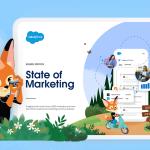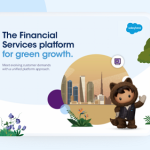As a Customer Service Lead, you’re managing a continuous stream of inflexion points that affect your business relationship with buyers.
It’s not just the explosion of channels or service/product quality that’s upping the pressure – it’s how customers buy from you that’s become critical. In South Africa, customers ranked price as the third most important factor in their buying decision.
In the first place? Customer service.
This sentiment is why each of these moments has the potential to deeply harm or reinforce your relationship with customers – and why you need to figure out the most effective ways to help them in the moments they value most.
In the latest State of the Connected Customer report, we asked people like you, and people who buy from people like you, what a great experience means to them.
Here are five things South African customers told us about the shape of the service landscape, and how you can create stronger customer experiences and relationships.
State of the Connected Customer Report
Learn about attitudes to trust and loyalty, how to balance personalisation with privacy, and the best ways to engage with customers at every touchpoint.

Selling is service
For a long time, service played second fiddle to sales – a support function that handled customer care after the main business of selling was completed.
That’s no longer the case.
Today, customers aren’t just looking for quality products from the companies they buy from. And it’s not even that they’d prefer stellar levels of customer support. It’s that they need it. Consider this: 94% of customers in South Africa agree the experience a company provides is as important as its products and services.
How customers feel across every touchpoint is the new standard companies are measured against. And nobody has greater influence over those interactions than customer support.
It’s why 96% of customers say a positive support experience makes them more likely to make a repeat purchase. This means your customer service teams can directly impact company profitability – and the key to that is creating frictionless journeys.
Consistency, consistency, consistency
When you shift to a more scalable business model, grow your revenue, or launch new and varied offerings, you’ll face a common blocker to customer happiness: siloed departments.
Service teams that advocate for smooth transitions across offices are advocates for their customers: 92% expect consistent interactions between departments – and the same percentage say they’re more loyal to companies that do this.
And given that 63% of surveyed customers in South Africa often feel like they’re communicating with separate departments – not one company – there’s a prime opportunity to jump ahead of the competition.
Plus, unlocking these seamless and informed interactions across the company creates a byproduct that’s just as valuable and can make your brand even stickier: trust.
Talking fosters trust
Trust might feel like a fluid and ethereal metric, but it’s quickly become a core consideration for buyers – 84% of South African customers lose trust in companies when there’s a lack of consistency across touchpoints.
So outside of consistent interactions, how can customer support teams continue to build that trust?
Well, 94% of surveyed customers believe trust becomes more important in times of change. In such moments, a key move you can make is to go above and beyond when it comes to communication.
84% say they consider honest and transparent communication to be the most important factor of a trustworthy brand. Develop an internal culture of openness and introspection, and your brand’s reputation (and customer relations) will follow suit.
Give customers autonomy
This may sting a bit. Customers don’t want to talk to service agents unless they need to.
Customer support departments that let buyers help themselves are a step ahead, both in terms of freeing up internal resources and reducing friction between customers and a resolution.
The proof? Just 13% of surveyed customers in South Africa would prefer not to use self-service to answer simple questions – a surefire indicator of a desire to resolve issues with minimal effort.
This isn’t just about reducing time to resolution. It’s about meeting a customer’s needs with the right solution at the right moment.
Ask yourself this: are the ways you’re deploying resources providing the most effective fix for customers? Regularly checking in on this is a valuable long-term exercise.
Get proactive
Support teams are key players in keeping customers on board when inevitable road bumps arrive.
We’ve already seen how transparent communication plays a role in fostering trust.
On top of this, support teams need a walk that matches the talk: 82% of South Africans say proactively resolving issues is the most important factor in building trust.
Put simply, customers who believe their issues will be resolved quickly, openly and fairly won’t walk away when those issues arise: 88% of South Africans will forgive a company’s mistake after receiving excellent service or support.
What’s next?
Customer service teams today can pull more levers than ever to enhance experiences, nurture brand loyalty, and ramp up retention.
And customers around the world have shared their opinions on how you can meet their new expectations.
The new State of the Connected Customer report shares insights from nearly 17,000 consumers and business buyers.
State of the Connected Customer Report
Now you’ve seen what customers expect from your Service team, read the full report to see what they think about personalisation and data privacy, brand loyalty, and AI.

























